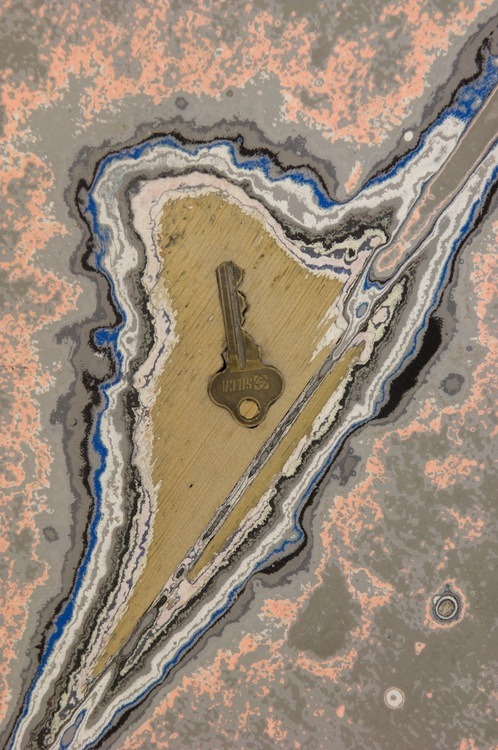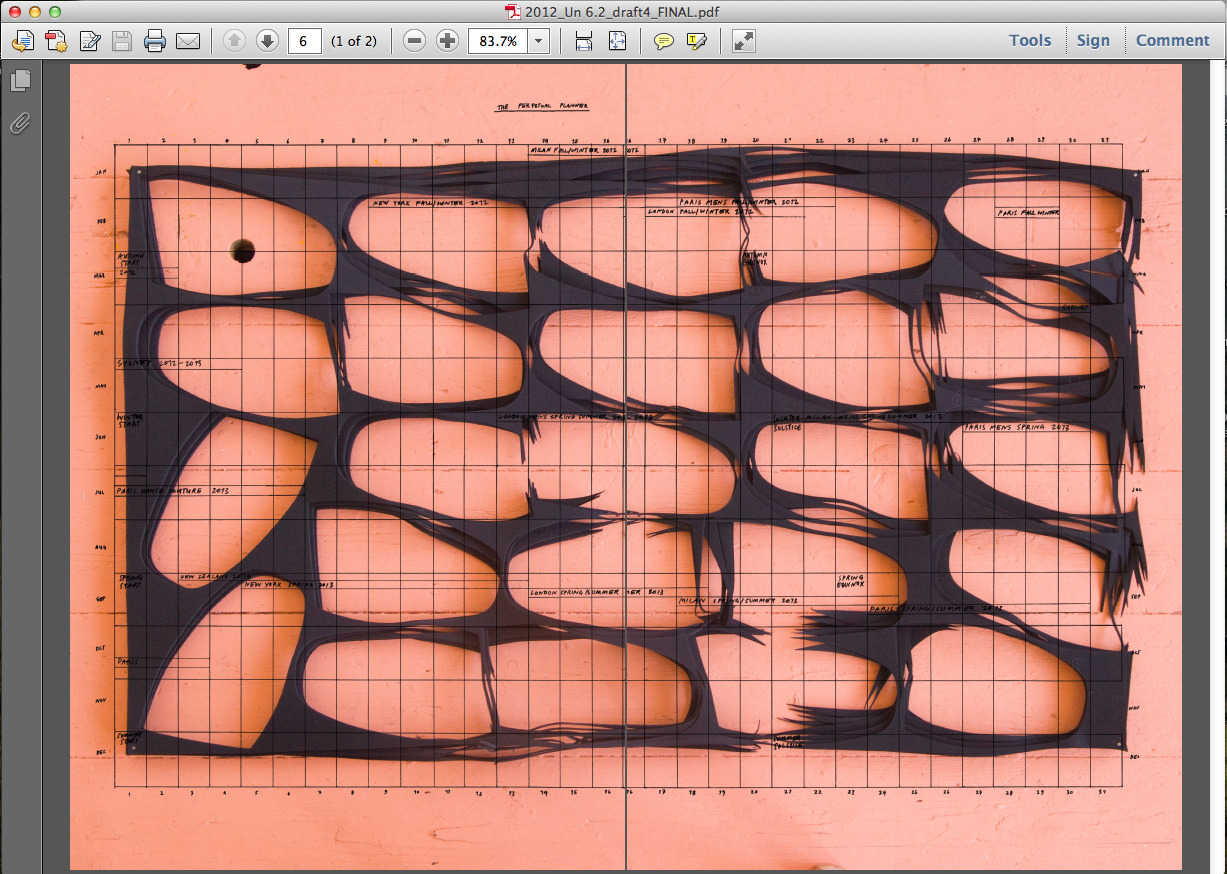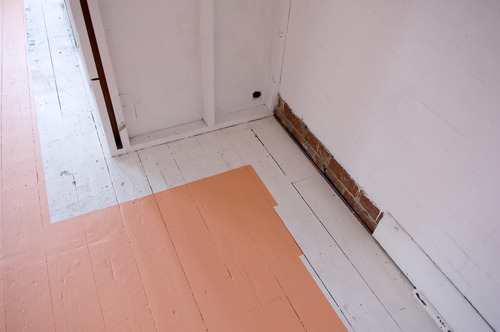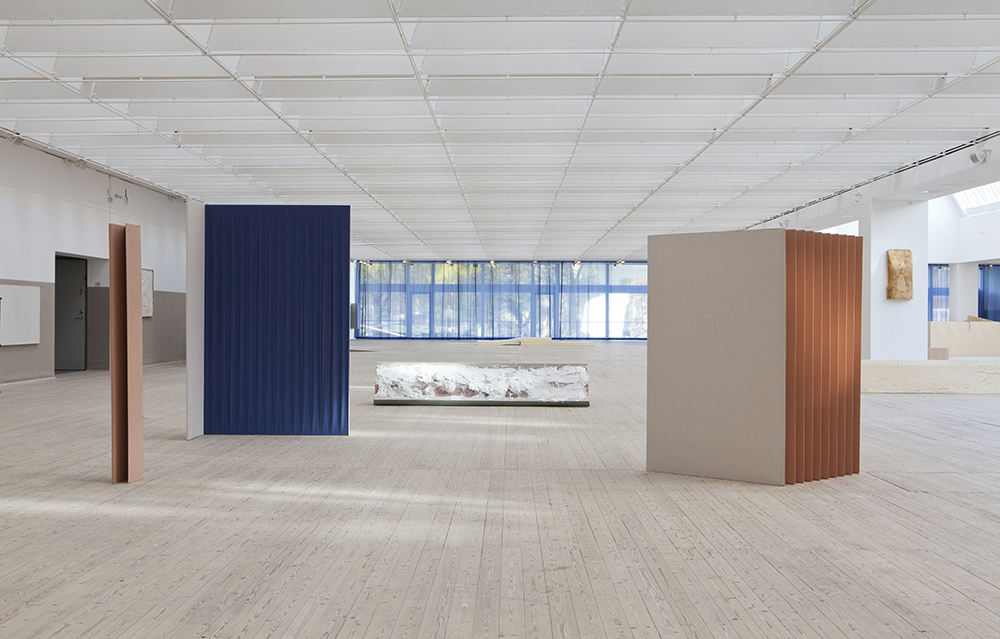Leonor Antunes at Marc Foxx via Contemporary Art Daily.
"assembled, moved, re-arranged and scrapped continuously"
(excerpt from press release:)
In this exhibition, Antunes considers Brazilian modernist architect
Lina Bo Bardi in “lina” 2012, a delicate brass and silver constructed
curtain which is a reflection of the parquet floor design in the
immanent modernist house she designed, known as the “Glass House” built
Sao Paolo in 1951. Bo Bardiʼs influence can also be seen in the soft red
leather floor work, “discrepancies with L.B.” which takes its form from
the hard gridded window treatment of Bo Bardiʼs building “Sesc
Pompeii”, also in Sao Paulo.
“lina” is installed upon “assembled, moved, re-arranged and scrapped
continuously”, 2012, the exhibitionsʼ title and largest sculpture. The
9.5 x 9.5 foot walnut wooden pavilion is also the venue for “chão”,
2011, a 12 part hand- knotted and incrementally increasing, gridded
series of delicate black nets. The canopy itself delineates the room,
asserting an almost domestic feeling and providing an exhibited
arrangement of grid upon grid within the show.
Hanging from the rafters and breaking her gridded constructions is
the organic work “random intersections #7”, a sculpture made from
handmade black leather straps, similar to horse bridals and referencing
Carlo Mollinoʼs equestrian school in Turin “Società Ippica Torinese”,
built in 1937 but destroyed in 1960. Antunes, like Mollino, has a great
appreciation for the movement of material and this work brings her
materiality back to a more corporeal connection.
The marriage of the fine black netting, the metallic glimmering curtain and the robust and darkly slick wooden structure upon which the works adorn, makes for an interesting and pleasing relationship. It reflects various thoughts I have myself had recently, revolving around an abandoned metal spring-bed base (which has since disappeared, and whose disappearance I may not fully get over for weeks or months) and a large pile of flaccid overstretched rubber bands.
I think it is only recently that tactility has taken on such importance in my work. The overwhelming feeling of wanting to touch something is luring me into the photographs of Antunes' work.
Knotting, linking, twisting; connecting ideas and materials is a common motif represented in my practice, building up textures and surfaces, images from small marks or gestures - stitches, knitting, creating patterns, repetition of shapes, reshaping the line - whether it is a length of embroidery thread or a pencil mark on paper.
(some notes from my journal)
"an interesting object (the bed base), black and silver and brown, stripped bare of any embellishments.
skeletal. the bare bones. structural, architectural. the inner workings, masculine.
Uncovered, exposed.
a single bed, only room for one.
standing upright, no room for anyone.
removed from it's original function/identity.
the coils and springs have a hypnotic quality, round & round.
rubber bands - the opposite of the coiled spring: soft, flaccid, stretchy.
mirroring the circular motif of the springs but out of shape, wobbly, chaotic, disorganised.
spring : springa sprang har sprungit (run, ran, have run)
spring is run in swedish.
a netting of rubber bands, covering the upright bed base. draped over the frame like a caress, an arm across the shoulders. a shroud/net encompassing it.
the bands are like thoughts, ideas, anxieties, unanswerable questions, dreams.
what fills the mind and what weighs one down.
tangled threads - made even worse with no beginning or end, circles connected to more circles, no straight lines here.
rubber bands with the ability to be stretched and reached through but can they ever be escaped from?"
just some thoughts to be thought about.
first item of business, sourcing another perfect spring single bed base, and ruing the missed opportunity of the one I thought was languishing casually waiting for me to get home from work to be rescued.











 [click images to enlarge]
[click images to enlarge] 
